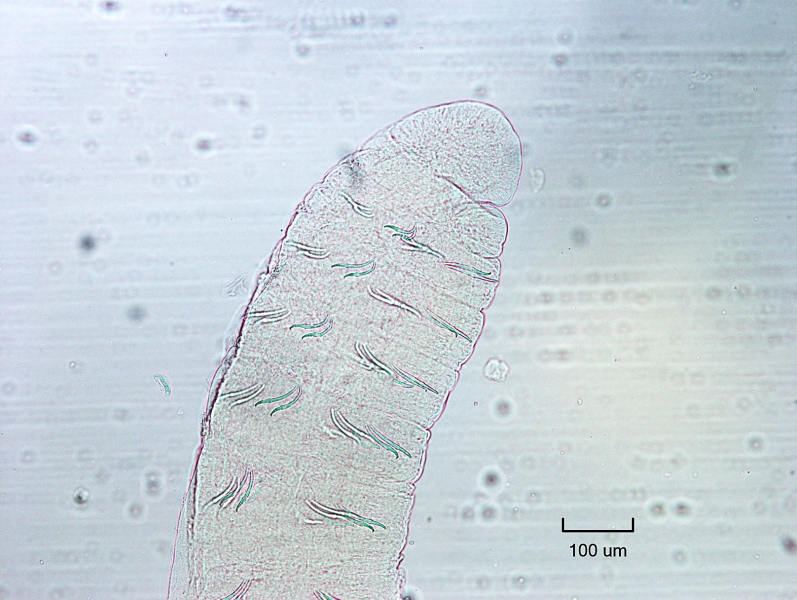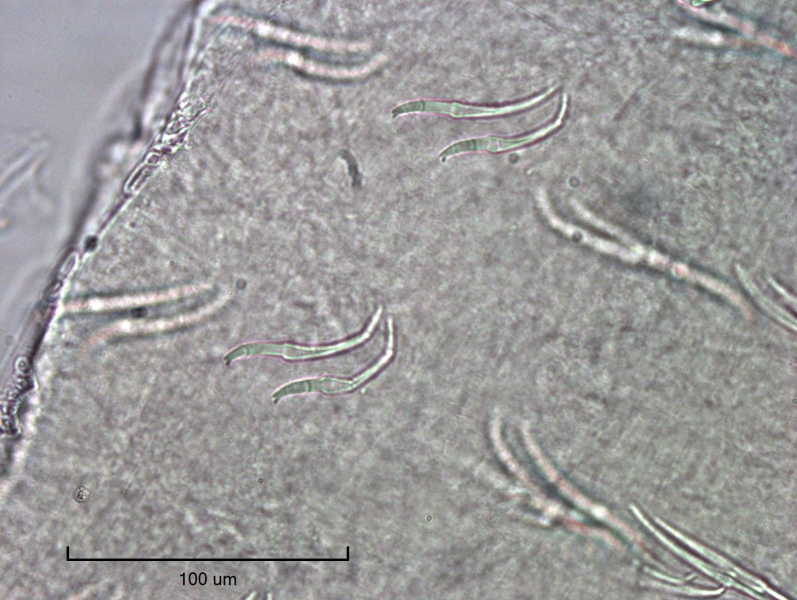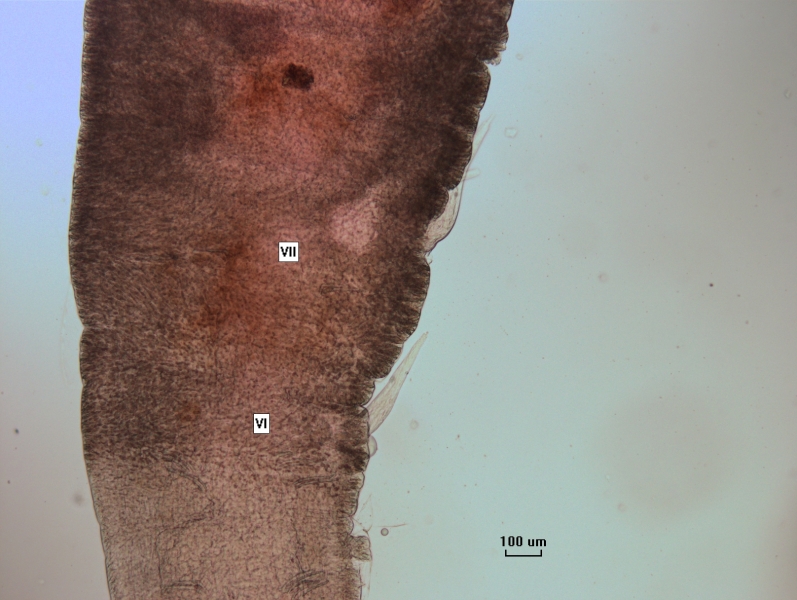Stylodrilus heringianus
Taxa description
Stylodrilus heringianus (Claparède, 1862) is a freshwater oligochaete worm that is a common oligochaete in the Great Lakes. It is a lumbriculid worm with only two chaetae per bundle, all bifid with short upper teeth, no proboscis, and two long non-retractile penes on X. The penes are about 300 µm long, although may be smaller if just forming. There are typically only one pair, but we have observed up to three pairs of penes in different segments anterior to X. S. heringianus is similar in size to tubificid worms but can be separated by the pairs of chaetae in each bundle and the soft, tapering, permanently everted penes. The chaetae are sigmoid with a nodulus and are bifid with a very short upper tooth, typically in pairs although there are occasionally three or four in some bundles as a new set of chaetae are growing in. This worm tapers and does not fragment readily, unlike the other common species of lumbriculid in North America, Lumbriculus variegatus. S. heringianus is pale-colored and lacks a green tinge that is typical for L. variegatus, and has two pairs of short, unbranched lateral blood vessels posteriorly, which may be hard to see if specimens are stained with rose bengal. Originally, this worm was considered a European species that had been introduced to North America, but there are other species of this genus across North America, challenging this hypothesis (Kathman and Brinkhurst, 1998).
Distinguishing features
S. heringianus has two bifid chaetae with short upper teeth per bundle and two long penes. There are 2 pairs of lateral blood vessels posteriorly.
Habitat
Most often found in cold, oligotrophic profundal habitats.
Lake occurrence
This species occurs in all five Great Lakes.
Similar species
As stated above, the other most common species of lumbriculid in North America is Lumbriculus variegatus, which does not have penes and can only be identified when mature by examining internal structures, although there are asexual forms as well. L. variegatus fragments easily and when living has a red coloration with a green anterior end, something that does not show up well in preserved and stained individuals. There are posterior blood vessels with branched lateral vessels, not unbranched as in S. heringianus. It is best to call all lumbriculids without penes “immature lumbriculid” unless dissections or sectioning is being done.
The pairs of bifid chaetae with short upper teeth are enough to differentiate it from other oligochaete worms even in very young or even embryonic worms. However, there are a few tubificids that could be confused with lumbriculid worms since they have bifid chaetae with short upper teeth.
Thalassodrilus hallae is a small tubificid worm that has anterior chaetae with the upper tooth much shorter and thinner than the lower. Up to XIX, there are 3–5 bifid chaetae like that, and in the next few segments the dorsal chaetae switch to simple-pointed chaetae, and the ventral chaetae are simple-pointed starting in XXX. T. hallae is less than 4mm long. In comparison, S. heringianus has no simple-pointed chaetae, and bifid chaetae only appear in pairs. S. heringianus tends to be much larger (25–40 mm long) and has penes on X instead of penial chaetae on XI. Immature lumbriculids could be confused for T. hallae, so make sure there are only two chaetae per bundle.
Tubificids from Aulodrilus have chaetae that are bifid with the upper tooth shorter and thinner than the lower tooth (sometimes replicated), but some of them have hair chaetae and most of them have specialized chaetae posteriorly (oar-shaped, brush-shaped). There are many more chaetae per bundle and these worms tend to have sediment tubes. The penes on Aulodrilus species are much smaller than the long penes on S. heringianus. Many species of Aulodrilus are much smaller than most S. heringianus but Aulodrilus americanus tends to be closer in size, though with many more chaetae per bundle, brush-like posterior chaetae, and often a sediment tube.
There is also the possibility that inexperienced taxonomists might confuse Potamothrix moldaviensis with S. heringianus since they both have penes sticking out of the body wall and S. heringianus is often identified while sorting, so it is not mounted. P. moldaviensis has eversible penes that may or may not be everted, but if they do protrude, they protrude from a thickened clitellum and are shorter and less slender than those of S. heringianus. There are large, trough-shaped spermathecal chaetae on X. P. moldaviensis has many more chaetae per bundle, all of which are distinctly bifid.
Relative size
S. heringianus is a large freshwater oligochaete. It is 25–40 mm long.
Does it have a barcode reference from the Great Lakes?
Yes, this species does have a barcode reference from the Great Lakes.
References
Kathman, R.D., and R.O. Brinkhurst. 1998. Guide to Freshwater Oligochaetes of North America. pp. 232–233, 210, 22, 16, 200–201, 184–187, 198–199, 150-151, 226–227.





